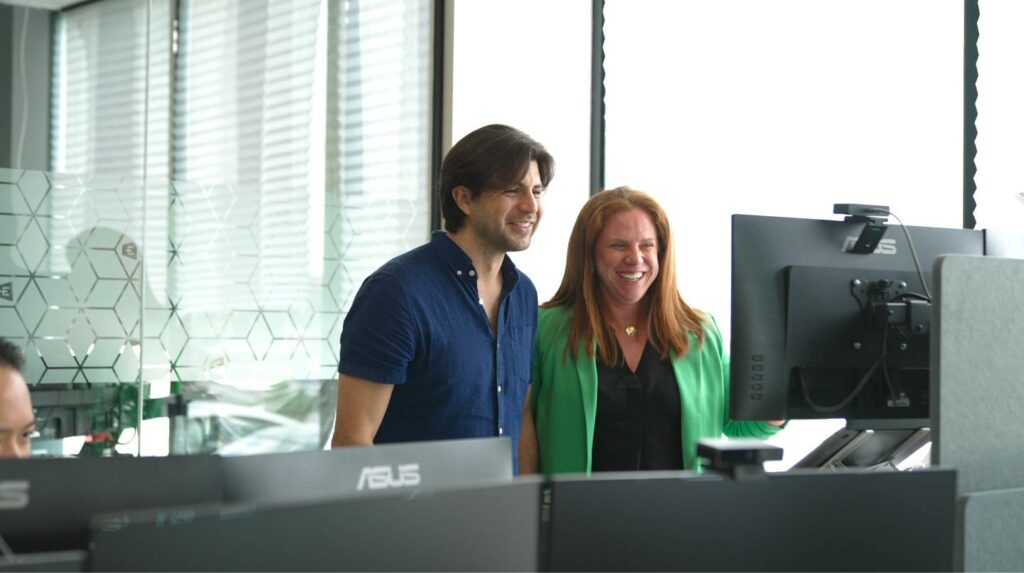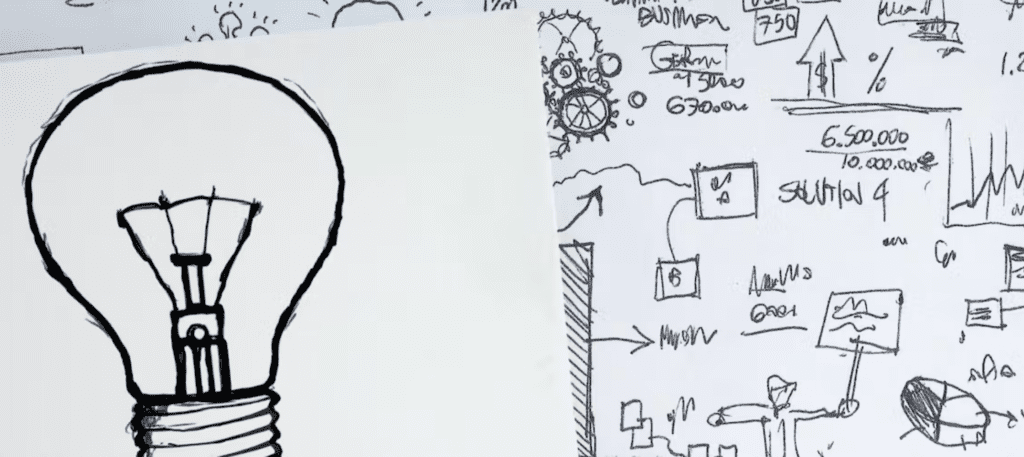Over the last several years we have had a burning desire to build out our Advisory Services after many years of working with clients that need a fully baked A/V Strategy prior to undertaking massive office change. Many companies pull in A/V technology companies after offices are nearly complete. A/V Strategies are critical in the early stages, often informing how offices should be laid out and how technology can be used to help people collaborate, innovate, and be more efficient.
Chris Wheeldon from Two Raven Consulting Services was brought on board to help us undertake our Service Design Sprint. This is an interview we conducted with Chris on his experience hosting our sprint and what was learned.
What is a service design sprint?
The short answer is that it’s a way for a team of 4 to 7 people to create a new service for their business in just five days. It was designed to be a fast and inexpensive way to innovate.
The longer answer is to unpack the term into three parts:
Design is a people-oriented approach to creating. Done properly, it steps back and looks at the big picture realizing that the whole, is more than just the sum of the parts. Putting oneself into the shoes of others is a key element. In a workplace, these others include the occupants, the service support people and those who approve changes – financial, legal, managerial, etc. Thinking like a designer means considering an ecosystem of people, not just one or two.
“Service design, as the name suggests, specifically creates new services and improves existing ones. It thinks about the journey of the customer and the touch points that people encounter as they interact with a service, and looks for ways to improve the effectiveness and experience of those touch points. Service design changes negative or neutral experiences into positive ones by remembering that services are parts of a system and that people who use a service do so because they want to get something done.”
How does it differ from a more traditional process?
Design sprints differ in several ways from conventional methods of innovating.
They deliver results quickly – solutions can emerge in as little as a week – and rely on the members of the team to do the work of understanding the problem and creating a solution. Because of this they are much less expensive than the traditional consultant model. Most companies can learn how to run sprints on their own. This reduces the cost of innovation and dependency on outside consultants.
Design sprints can be an effective way to bond siloed departments around a common challenge. Their co-creative approach builds an enduring sense of ownership and empathy within the team – they understand one another better and care more about shared concerns.
Sprints enable companies to work like startups, who have what’s often called a “fail fast” mentality. What this really means is that through a sprint process they start with a minimal solution, learn quickly what works and what doesn’t and can easily adjust course to suit. This lets companies move towards the right outcome with smaller investments of time, energy and money.
Can you talk about the process you undertook with ET Group?
It started as a conversation – to understand what they wanted from a sprint and whether it was the right model for their stated objective of building an advisory business.
The sprint was run over four workshop days plus an interview period and looked something like this:

Defining the challenge
The first day was about framing the initial problem to be solved. The team started by sharing what each person knew about the challenge and its environment. This is the start of empathy within the team – sharing what everyone knows and assumes. This helped them decide who they needed to interview.
Insight-gathering interviews
The team conducted several interviews over the next week and a half, mostly with visionary leaders that they knew. They were exploring what these people experience now and what their struggles are when planning for AV services. The team amalgamated all this learning into an overall map of customer experiences, including the most painful parts.
Co-creation +first test + lean start-up
Building solutions came next. Each person on the team came up with a solution to address one or more pain points, then shared it with the others. Then, each person added their own thoughts. No critiquing was allowed. After everyone had shared their ideas, each person drew a final version of their solution. Then they all voted on what they liked about each proposed solution.
With these ideas fresh in their minds, the team developed their Minimum Valuable Service. The MVS is unique to Service Design Sprints and is a map of how they want the customer to interact with their new service. In contrast to other types of mapping – value stream, swim lane, etc. – it starts off by identifying what the customer is trying to achieve at each step, then describing the tools they are going to apply to meet those needs. It’s minimal because everything not essential to addressing a pain point is parked for later.
Finally, the team ran a test of the new service and gathered feedback. This is really an on-going process but at this early stage the question is whether the customer even values the solution. If not, then a new solution can be quickly built and tested with the information they already have on hand. By designing and running simple experiments that become more sophisticated over time, the team will get to the right solution that they would not have seen from the outset.
Was there an “a-ha” moment that led to surfacing their goal?
What’s interesting is that at the beginning the team doesn’t know exactly what their goal is – only a general one. The process encourages them to have questioning minds and discover those unmet customer needs that are the source of true innovation.
Why would you encourage others to try it?
Service design sprints are akin to project management in that they aren’t specific to any industry – they’re a way of looking at re-building services with an outward-facing, questioning mindset and using a team-based approach to create better ways of doing things. By applying an approach that uses experiments to produce the evidence that decision-makers need to perceive the value of an innovation, it can potentially save hundreds of thousands of dollars spent on a new initiative.







